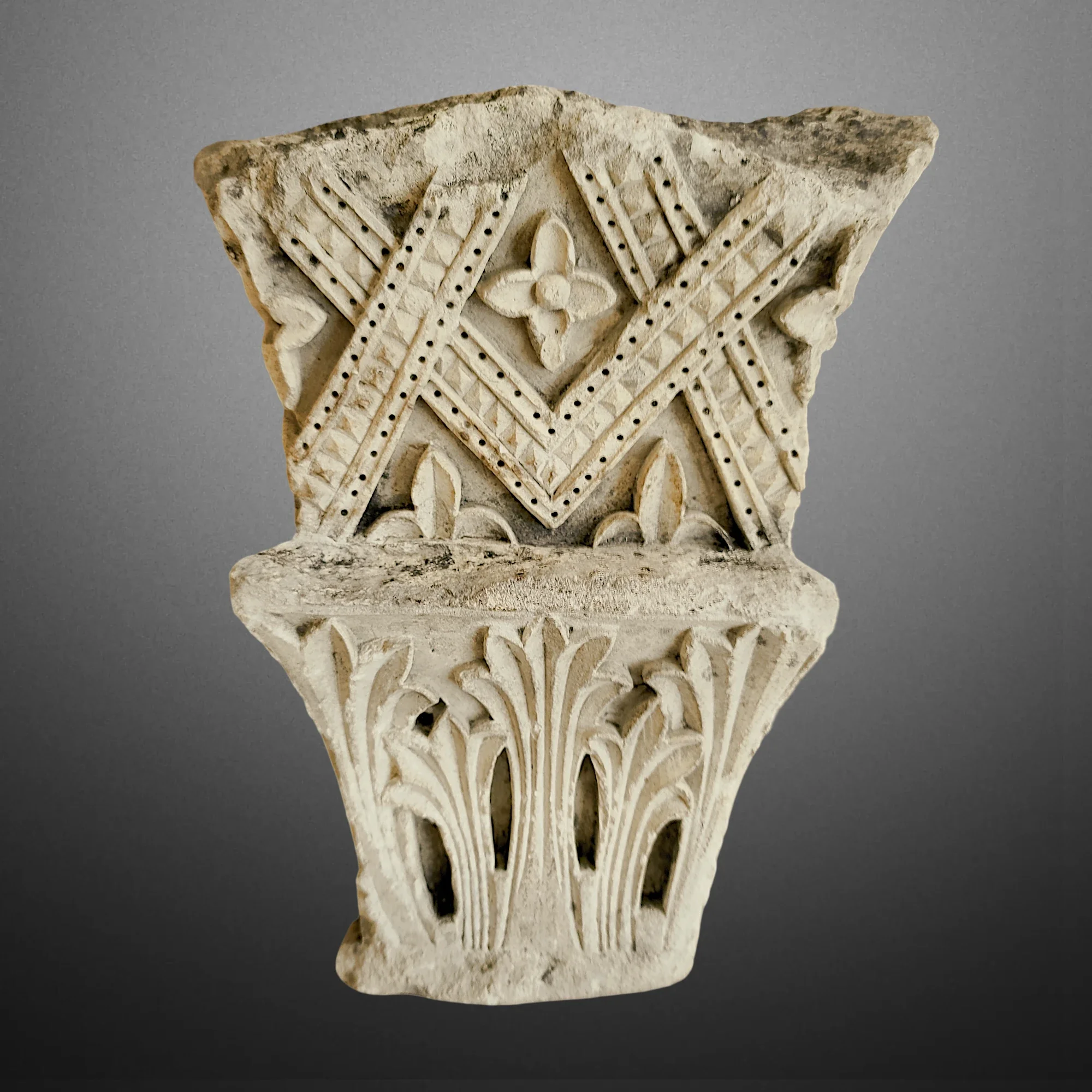Back to the artwork ref.266
Switch to full screen mode
Exit full screen mode

Origin: Île-de-France, France.
Medium: limestone
Size: 30 cm
Period: 12th century.
Condition: Minor losses
Price: 7 500€
Ref.266
Pilaster capital in carved limestone on three faces. This capital features two registers. The upper, flared register is carved with fleurs-de-lys and rosettes within a punched geometric band decorated with diamond points. The lower register is adorned with fan-shaped palmettes. The combination of fleurs-de-lys and this palmette typology suggests an affinity with Parisian workshops. In the 12th century at Saint-Denis, Abbot Suger was the first to develop these two motifs, which then spread throughout the Île-de-France.
Under Suger’s patronage, the Basilica of Saint-Denis—necropolis of the Kings of France—acquired its first fleur-de-lis decorations, notably on the capitals of the ambulatory, the stained-glass windows, and the friezes of the west portal. By incorporating this dynastic emblem of the French monarchy, Suger imbued the décor of Saint-Denis with a political dimension (Jean-Michel Leniaud, Le pouvoir et la foi: essais sur l’abbaye de Saint-Denis dans la France médiévale, Fayard, 1995).
References consulted:
· Stanford E. Brown, Suger and the Use of the Fleur-de-lys in the Abbey Church of Saint-Denis, Speculum 47 (1972), p. 1–24.
· Abbot Suger and Saint-Denis, Metropolitan Museum, 1987.
· Sculptures of the 11th–12th Centuries: Roman and Early Gothic, Musée national du Moyen Âge, 2005.
· The Birth of Gothic Sculpture. Exhibition Catalogue, Musée de Cluny, 2019.